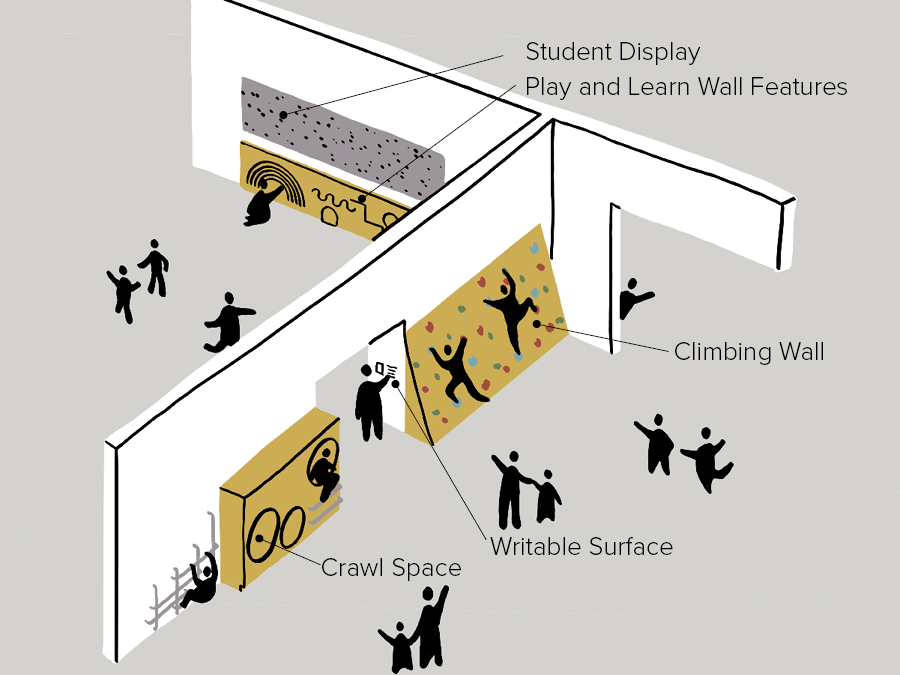Learning Walls Versus Teaching Walls
Key Points
-
Learning Walls is a Design Pattern that can help schools “Defront the Classroom”.
-
Ways to make walls more of an asset for learning include making them writable and more permeable.
-
Being thoughtful about what goes on (and doesn’t go on) walls is important to consider.

Problem: The purpose of a traditional classroom is to focus attention on the teacher at the front of the room, referred to as the teaching wall. In a learner-centered paradigm, where the whole environment is a learning resource, focusing resources on one teaching wall fails to leverage the natural curiosity of each individual learner.
Additionally, traditional classroom and corridor designs limit the natural human inclination to extend our mind and our learning to the spaces around us, as described by Annie Murphy Paul in The Extended MInd.
Lastly, traditional classroom walls include a cacophony of teacher-directed educational displays, storage, white boards and technology, perpetuating the notion that it is the teacher’s space rather than the learner’s space.
Solution: We can foster increased movement, active learning and student agency through a variety of small changes to the physical environment. Permeable connections between spaces invite learners to move from one space to the other. Spaces can be connected with open archways, sliding, folding or overhead doors, providing teachers and students with choices in how they move and interact.
Writable walls invite students to get out of their chairs to collaborate and share ideas. Niches and reading caves invite students to follow active movement with quiet, reflective learning. Climbing walls needn’t be limited to gymnasiums–they can be incorporated in a variety of learning spaces.
Writable walls invite students to get out of their chairs to collaborate and share ideas.
Randy Fielding
In addition to purposeful architectural and interior design, educators, coaches and advisors can enhance the use of walls by understanding and applying the basic design principles of harmony and hierarchy. Rather than positioning dozens of small pieces of paper across all the walls, highlight a selected number of elements, creating a hierarchy of focal points.
Neutral wall space is also essential for harmonious design, providing areas for the eyes to rest. Consider your experience in an art museum–vistas, paths and focus points are carefully orchestrated to offer both quiet reflection and also excitement.
In the image above, there are a limited number of elements in two rooms, with plenty of white or neutral space surrounding. The climbing spaces, small circular nest spaces, writable surfaces and student displays invite movement while engaging curiosity, eyes, hands and minds.
For those who want to go deeper, IDEO and Stanford’s d.School has curated a bunch of resources to help schools understand why and how to “Defront the Classroom”
In the next blog, we’ll explore two patterns related to Safety & Wellness. Taken together, these strategies serve to deinstitutionalize learning environments in pursuit of a spatial paradigm in which every person is holistically safe, healthy, and empowered.







0 Comments
Leave a Comment
Your email address will not be published. All fields are required.